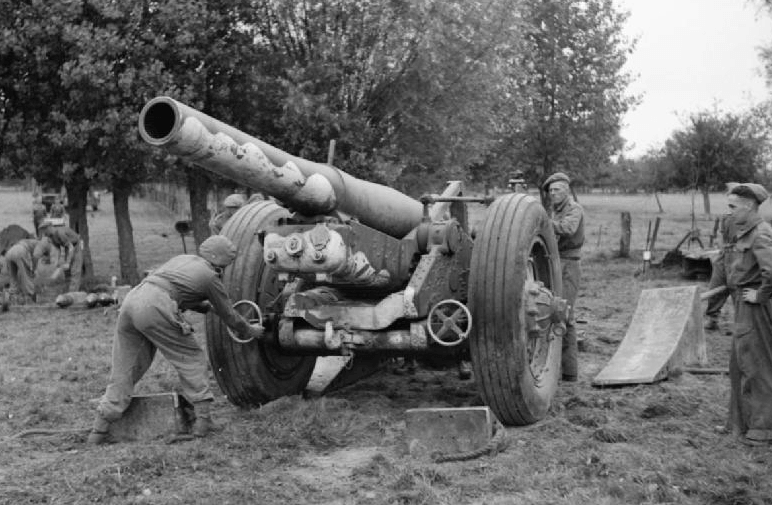
| Year | 1940 (Mk. I-V) 1943 (Mk. VI |
| Weapon Type | Heavy Howitzer |
| Origin & Designer | Britain/Vickers |
| Numbers Produced | 296 (Mk. 1 to IV) 78 (Mk. VI) |
| Crew | Crew: 10 (Mk. I to IV) No.1: Gun Commander No.2: Breech Operator No.3: Gun Layer No.4: Traverse Operato No.5: Shell Loader No.6: Cartridge Loader No.7: Ammunition No.8: Ammunition No.9: Ammunition No.10: Coverer Crew 12 (Mk. VI) No.1: Gun Commander No.2: Breech Operator No.3: Line Layer No.4: Lay Operator No.5: Lay Operator No.6: Cartridge Prepare & Loader No.7: Shell Prepare & Loader No.8: Shell Prepare & Loader No.9: Shell Prepare & Loader (Ram & Sponge) No.10: Shell Prepare & Loader (Ram) No.11: Shell Prepare & Loader (Ram) No.12: Shell Prepare & Loader (Fuze) No.13: Coverer |
| Calibre | 183mm |
| Elevation | -0° to +45° (Mk. I – V) -2° to +65° (Mk. VI) |
| Traverse | 8° (Mk. I – V) 60° (Mk. VI) |
| Breech | Wellin Screw |
| Recoil | Hydropneumatic |
| Gun Sight | No. 7 Dial Sight (Mk. I – V) M12 (Mk. VI) |
| Gun Mount | [@gun_mounts] |
| Carriage | Box Trail (Mk. I – V) Split Trail (Mk. VI) |
| Trailers | [@trailers] |
| Gun Shield | [@gun_shield] |
| Armoured Plate | [@armoured_plate] |
| Barrel Length | 4.340mm (L/22.4) (Mk. I to IV) 6.290mm (L/33) (Mk. VI) |
| Overall Length | 10.21m (Mk. I – V) 6.30m (Mk. VI) |
| Width | 2.74m (Mk. I to IV) 2.51m (Mk. VI) |
| Height | [@height] |
| Weight | In Action: 10.387 kg (Mk. I – V) 13.209 kg (Mk. VI) |
| Round Weight | 91.6 kg |
| Muzzle Velocity | 518 m/s (Mk. I – V) 4.97 m/s (Mk. VI) |
| Feed | [@feed] |
| Magazine Capacity | [@magazine_capacity] |
| Practical Rate of Fire | [@practical_rate_of_fire] |
| Rate of Fire | [@rate_of_fire] |
| Maximum Rate of Fire | [@maximum_rate_of_fire] |
| Maximum Ceiling | [@maximum_ceiling] |
| Maximum Ground Range | [@maximum_ground_range] |
| Maximum Range | 15.453m (Mk. I – V) 17.984m (Mk. VI) |
| Armour Penetration | [@armour_penetration] |
| Traction | Motorised (Scammell Pioneer R100 Tractor) |
| Variants | [@variants] |
| Notes | The 7.2in Howitzer was produced as a quick fix weapon to supply the British army with a heavy howitzer. The howitzers were developed from the BL 8in, which had been declared obsolete in 1926. The barrel was re-lined to 7.2in. The original 8in carriage was also up-dated with pneumatic wheels to allow for motorization. It came in six variants with the first four having only minor differences. Mark five was different because of the carriage, with the US made M1 carriage replacing the old 8in version. Mark six had a new longer barrel which gave it a longer range. The 7.2in first saw action in North Africa, and then used in Europe and Burma. It remained in use into the 1960s. |